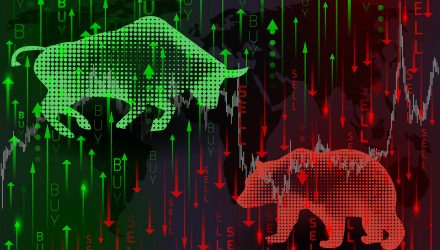Looking toward 2019, exchange traded fund investors should be re-evaluating their investment portfolios and plan for the year ahead.
On the recent webcast, Bull or Bear: How to Prepare 2019 Portfolios for Both, Robert Serenbetz, Portfolio Strategist at New York Life Investments, outlined the current late market cycle with steady global inflation and a strong producer manager index that reflects an ongoing economic expansion. As the positive economic conditions extends, though, central banks have been cutting back on their historically aggressive monetary accommodation, with the Federal Reserve embarking on interest rate normalization and a tighter monetary policy.
Furthermore, Serenbetz warned of material geopolitical issues that continue to weigh on the global markets, such as the North American Trade tensions, U.S.-China tensions, mounting concerns in Israel, fragmentation in Europe, Brexit, Gulf conflicts and North Korea tensions.
Overall, Serenbetz believed in a lower for longer growth outlook for 2019, potential relief from geopolitical issues ahead and a recession is still far off. Consequently, he advised investors to stay in the market, look to de-risk today and increase flexibility for tomorrow’s investment environment.
At New York Life Investments, Serenbetz noted that they are currently maintaining equity exposure, increasing portfolio defensiveness, adding diversified sources of risk premia, overweighting international equities, remaining underweight fixed income, and giving up some yield potential while seeking flexibility.
Looking ahead, Salvatore Bruno, Chief Investment Officer and Managing Director at IndexIQ, also pointed to a number of trends and insights that investors should keep a look out for 2019. For example, the Securities and Exchange Commission has been working on simplifying the approval process for ETFs, which could eliminate certain exemptive orders that may lead to reduce expenses and delays in launches.
As investors consider ways to diversify their portfolios, alternative ETF strategies could also attract attention. Alternative ETF strategies are already seeing greater asset inflows in a more volatile market year. So far this year, alternative ETF investments like merger arbitrage, long/short, managed futures, event driven, dedicated short and market neutral have all see increased creation activity. Overall, alternative ETF strategies saw assets under management grow 33% from 2017.
ETF investors who are interested in alternative strategies can look to a number of various options. For example, the IQ Hedge Multi-Strategy ETF (NYSEArca: QAI) provides a diversified mix of alternative strategies, including multiple hedge fund investment styles, such as long/short equity, global macro, market neutral, event-driven, fixed income arbitrage and emerging markets.
